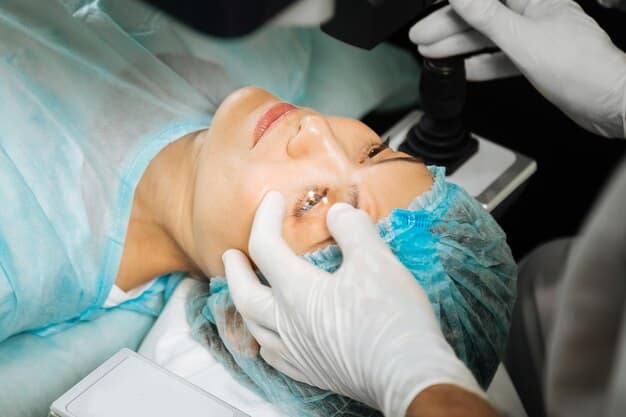Blepharoplasty, also referred to as eyelid surgery, has become one of the most popular cosmetic surgery procedures for people who want to improve their appearance or address functional problems around their eyes. For many people, the eyes are the first thing that others notice about them, in addition to being the windows to the soul. A tired, aged appearance that erodes confidence can result from sagging eyelids caused by aging, genetics, or other factors. Thankfully, blepharoplasty provides a dependable remedy that can revitalize the eyes and even enhance vision for certain individuals.
The Reasons Behind the Growing Adoption of Blepharoplasty
Blepharoplasty is frequently required for people with functional problems; it is not just a procedure for those looking to improve their appearance. Drooping upper eyelids, for instance, can block peripheral vision, raising safety concerns when driving or carrying out daily duties. Blepharoplasty may be life-changing in these situations. By eliminating extra skin and fat that obstruct vision, it not only restores the eyelids’ youthful, vibrant appearance but also helps to improve vision.
Furthermore, it’s critical to realize that, depending on the needs of the individual, blepharoplasty can be done on either the upper or lower eyelids. For individuals seeking a more comprehensive facial rejuvenation, the surgery can be combined with other procedures like skin resurfacing, facelifts, or brow lifts. It is important to remember, though, that insurance coverage might differ based on whether the procedure is considered purely cosmetic or medically necessary.
Key Information About Blepharoplasty
| Attribute | Details |
|---|---|
| Procedure Type | Cosmetic Eyelid Surgery (Upper & Lower Eyelids) |
| Duration | 45 minutes to 2 hours |
| Recovery Time | 10-14 days for initial recovery |
| Risks | Infection, dry eyes, scarring, temporary vision loss |
| Results Duration | 5-7 years (upper eyelids), lifetime (lower eyelids) |
| Complementary Procedures | Brow lifts, facelifts, skin resurfacing |
Source for more information: American Society of Plastic Surgeons , NHS
What to anticipate throughout the process
Blepharoplasty is a relatively quick procedure that has a high level of effectiveness. Depending on the amount of work required, a combined upper and lower eyelid surgery can take up to two hours, whereas an upper blepharoplasty typically takes 45 minutes to an hour. In order to reduce scarring, the surgeon will cut along the eyelids’ natural folds. A natural, renewed appearance is ensured by the careful removal of extra skin and fat.
When lower eyelid surgery is performed to address problems like bags under the eyes, incisions may be made just below the lash line or, in certain situations, concealed inside the eyelid. Although everyone recovers differently, most people have bruising and swelling in the first few days after surgery, but these usually go away in two weeks.
Benefits and Risks: A Fair Assessment
Blepharoplasty has some risks, like any surgery, but they are not very common. Infection, dry eyes, scarring, and transient vision changes are a few possible side effects. These risks are typically low, though, particularly when carried out by a skilled, board-certified surgeon. On the other hand, the advantages are remarkably substantial: enhanced self-confidence, better peripheral vision, and a renewed, younger-looking appearance. The majority of patients who have the procedure are extremely happy with the outcome, noticing an improvement in their appearance and overall quality of life.
Recuperation and Prospects for the Future
Following blepharoplasty, recovery is comparatively simple. Most of the time, patients have some eye swelling and bruises, but these usually go away in 10 to 14 days. For the best healing, cold compresses, prescribed ointments, and a few days of rest are necessary. Although complete recovery may take several months, most people feel comfortable going back to work and social activities by the two-week mark. It’s crucial to remember that lower eyelid surgery typically produces more permanent results, whereas upper eyelid surgery can produce results that last for five to seven years or longer.
Why Blepharoplasty Is Becoming More Popular
Blepharoplasty has become increasingly popular in recent years as people realize its advantages for both functionality and appearance. Surgery is now more accessible to people who want to improve their appearance without enduring a lengthy recovery period thanks to advancements in surgical techniques. Blepharoplasty offers a very flexible, safe, and effective solution for vision issues brought on by drooping eyelids or for those who just want to update their appearance.
In the years to come, blepharoplasty may gain even more popularity among people looking to rejuvenate their faces as surgical methods advance and become more sophisticated. Beyond aesthetics, this procedure offers long-term benefits by improving both appearance and quality of life.

